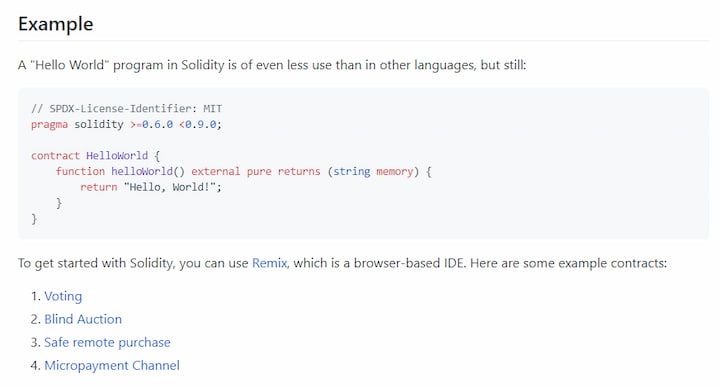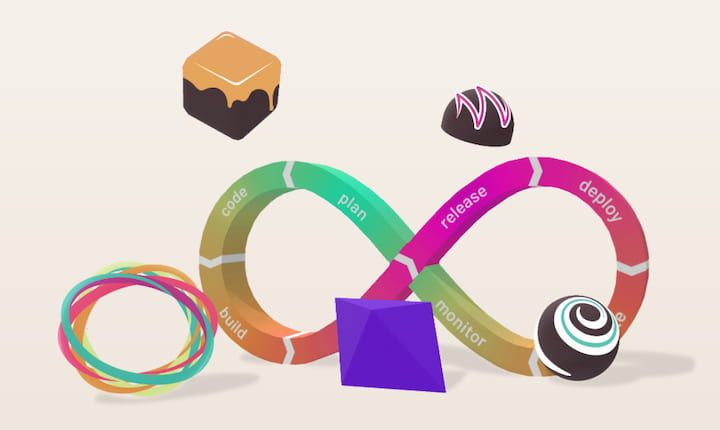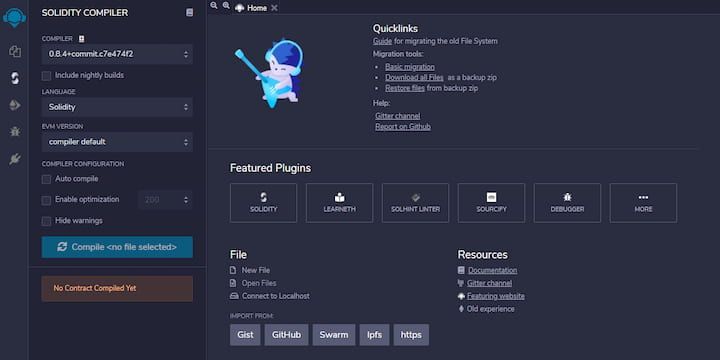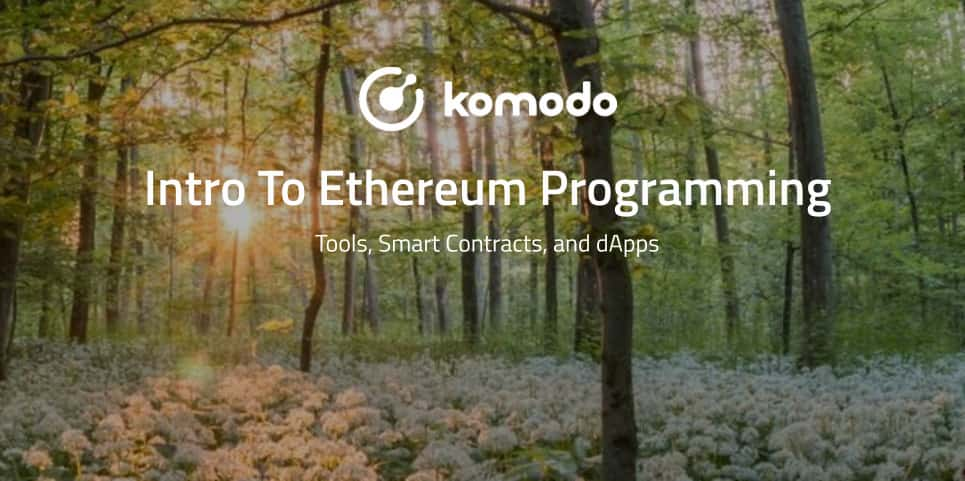A guide to getting started with the fundamentals tools and technologies of the Ethereum blockchain network
Ethereum is known as the premiere smart contract platform for blockchain developers. Compared to the rest of the blockchain sector, this platform has a significant lead in terms of the number of blockchain developers building on it. Although there are many limitations to consider, Ethereum is widely regarded as an amazing smart contract platform for building decentralized applications (dApps).
Why Is Ethereum So Popular Among Developers?
The shortest explanation for Ethereum’s popularity is that the platform has an advantage as the first blockchain protocol to support smart contracts, which are rules defined by computer code that tell how complex operations on the blockchain work. As a major part of the platform’s appeal, smart contracts enable developers to build sophisticated applications that take blockchain from a peer-to-peer network for the transfer of data (e.g. sending and receiving cryptocurrency) to a network for decentralized finance and all sorts of other use cases. Lending protocols, decentralized exchanges, NFT marketplaces, and much more use smart contract logic. It is estimated that 23% of all ETH is locked in smart contracts as of June 2021. Now that we understand how robust the platform really is, let’s look at how to start development in Ethereum.

Ethereum App Development Tools
There are hundreds of thousands of open-source Ethereum app development tools available to get started. With a variety of options to choose from, along with in-depth blockchain development courses, getting started as a beginning developer on Ethereum is quite easy compared to most other blockchains. You’ll likely be using Solidity as the go-to language for this smart contract platform, which has quickly become arguably the most in-demand blockchain programming language around. Besides Solidity, Vyper offers an alternative example of a new experimental pythonic programming language.
Frameworks
While there are over a dozen Ethereum development frameworks, Truffle is currently the most popular option for smart contract development, testing, and deployment. framework. The Truffle suite includes Truffle, Ganache, and Drizzle. Truffle can be used for several tasks. For example, you can use it for compiling Solidity code into Ethereum Virtual Machine (EVM) bytecode and creating an Application Binary Interface (ABI) as well as library linking - copy and pasting addresses into bytecode). It’s also useful for network management - deploying to public or private networks and migrating contracts to either a local testnet like Ganache or a live network like Ropsten, Rinkeby, or the main Ethereum network. Truffle also supports front-end integration with Drizzle, which handles boilerplate front-end tasks required by blockchain applications. There are many additional reasons to use Truffle that can be found in the guide published by ConsenSys. Other examples of Ethereum frameworks include Brownie, Embark, and Waffle.

Test Blockchain Networks
Rather than deploying smart contracts directly to the Ethereum mainnet which requires the use of real cryptocurrencies, numerous test blockchain networks enable you to test smart contracts on a network that mirrors the same functionality as the real network. ethnode is a zero configuration tool to run a local Ethereum node - which is one of many computers that work together to verify transactions on the network to ensure blockchain consensus is secure and that data is accurate. Running an Ethereum node with Geth or Parity is as easy as using the command: npm i -g ethnode && ethnode. Ganache, Kaleido, and CloudFlare Distributed Web Gateway are among the many additional options for testing.
Integrated Development Environments (IDEs)
An Integrated development environment (IDE) is an important tool for any type of software development. The same is the case with blockchain development. There are numerous IDEs available for Ethereum development, including Ethereum Studio, Visual Studio Code, and YAKINDU Solidity Tools. One of the most popular options is Remix IDE - an open source application that has a rich set of plugins with intuitive GUIs. Remix is used for the entire journey of smart contract development and provides a playground for learning and teaching Ethereum. Remix IDE includes sub-projects like Remix Plugin Engine, Remix Libs, and Remix-IDE. Remix IDE enables you to write Solidity contracts directly from a web browser or locally on desktop.

Test Ether Faucet
Sending and receiving testnet coins is a good free way to test smart contracts to understand how transactions work and how users may interact with dApps built with them. Rinkeby faucet, Kovan faucet, and Ropsten faucet (MetaMask) are a few places where you can get testnet Ethereum (ETH) sent to your wallet.
Other Development Tools
The above development tools categories are just some of the helpful ways to start building on Ethereum. You’ll also benefit from checking out frontend Ethereum APIs, backend Ethereum APIs, bootstrap/out-of-box tools, Ethereum ABI (Application Binary Interface) tools, existing smart contracts, and more. ConsenSys GitHub is likely the best place for Ethereum development learning resources. The company provides a comprehensive list of tools that are helpful for blockchain developers of any skill level.
How Do You Create A Blockchain In Ethereum?
Ethereum doesn’t support blockchain creation as a native functionality. Developers building on Ethereum are relying upon a single blockchain mainnet to deploy live smart contracts and dApps, which has led to scalability challenges as the Ethereum ecosystem has grown over the years. This has led to a surge in gas fees and slow transaction completion times. To solve this issue, a variety of solutions have emerged. For example, Ethereum is moving to a Proof of Stake architecture that will increase its scalability, along with Layer 2 protocols. However, to actually create a multi-chain network, Polygon (formerly Matic) is a project that has emerged to provide a protocol for building independent blockchains that are compatible with other chains in the Ethereum ecosystem.

Ethereum App Development Services
If you want to launch on Ethereum and don’t want to learn how to program one from scratch, more web development agencies are starting to provide Ethereum app development as a service. For example, LeewayHertz is an established organization that has worked with clients like Pepsico, 3M, Siemens, ESPN, Disney, and more. This agency builds dApps, helps launch nodes, create ERC20 tokens, conduct smart contract audits, and more. There are several other firms that offer similar services. If you are a business or developer wanting to build your own blockchain, Ethereum is just one of many blockchains that offer a viable solution. Komodo, for example, is a multi-chain platform for launching independent blockchains with smart contracts powered by UTXO technology.
Smart Contract Development
YouTube is one of the best places to learn the basics of smart contract development for Ethereum. Dapp University is a popular channel that has free videos like ‘How To Code Your First Ethereum Smart Contract.’ Beyond that, there are numerous paid online courses which walk you through the steps to write smart contracts that can be deployed to create real-world applications which could even be used by actual users on the Ethereum mainnet. If your goal is become a blockchain developer, learning Solidity is a good place to start. An increasing number of job postings list experience in Solidity smart contract development as a requirement.
Ethereum Applications
Another beneficial aspect of the Ethereum blockchain platform is that there are thousands of existing applications to look at as examples for what you can build. For example, applications like Uniswap have open-source code. This means that, if you want to create your own Uniswap exchange clone, it’s quite easy to do (although some apps like Uniswap v3 are subject to licensing rules). Of course, gaining a user base then becomes the next major challenge, but it’s actually possible. For example, other ERC20 DEXs have used this model to copy Uniswap’s codebase to kickstart the development of new dApps that have added improvements to the core technology.Other popular dApps built on Ethereum include Aave, Maker, Curve Finance, Compound, and yearn.finance to name a few.
Conclusion
Much like other blockchain platforms, Ethereum is gaining recognition as a powerful way to build innovative decentralized applications that run on a system very different from traditional client-server technologies. As more blockchain developer tools are created, the ecosystem is becoming more favorable among developers. In turn, Ethereum is gaining developer adoption at an accelerated pace. The possibilities of what you can develop on Ethereum are truly limitless.
📧Komodo Newsletter
If you'd like to learn more about blockchain technology and keep up with Komodo's progress, subscribe to our newsletter. Begin your blockchain journey with Komodo today.

